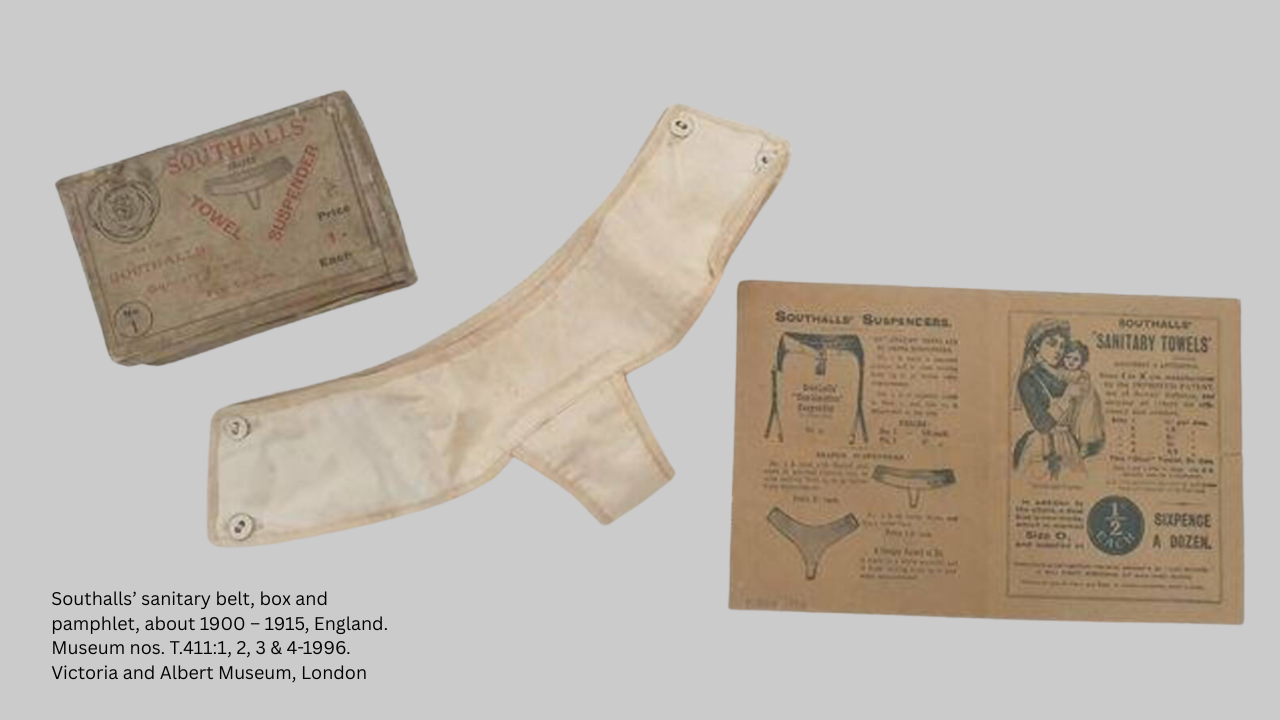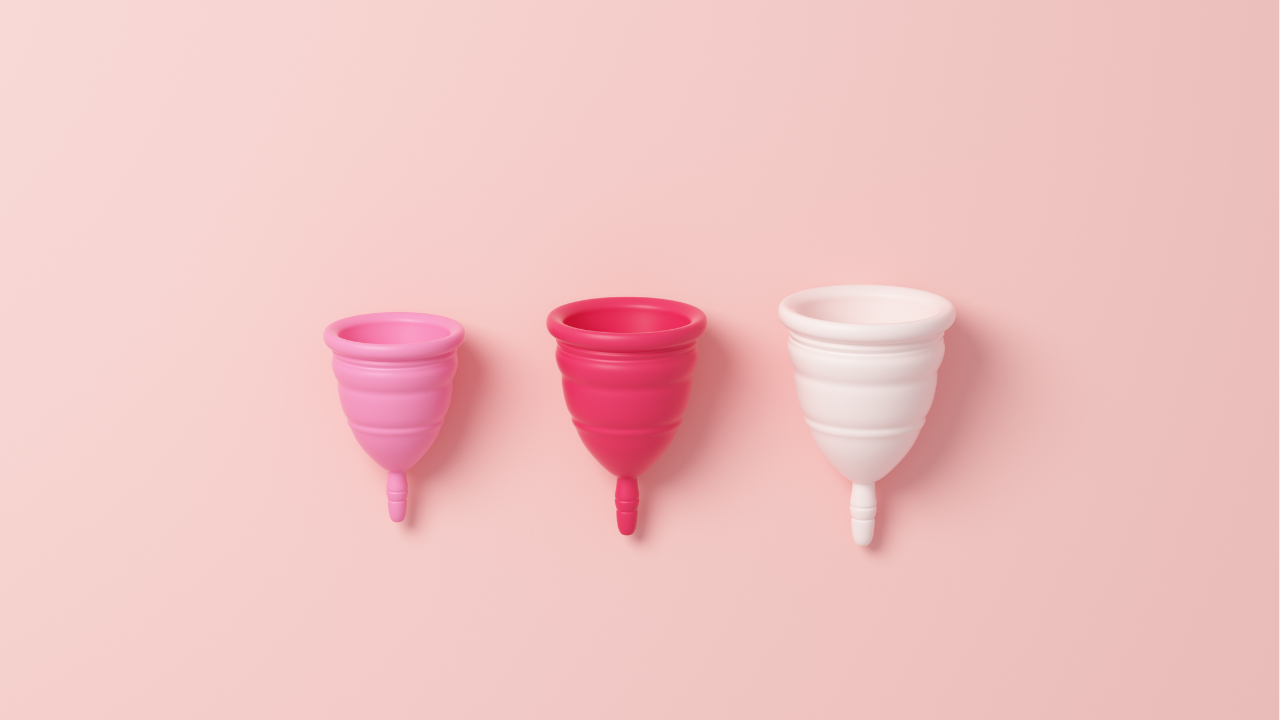- Health Conditions A-Z
- Health & Wellness
- Nutrition
- Fitness
- Health News
- Ayurveda
- Videos
- Medicine A-Z
- Parenting
- Web Stories
Medical Memoir: The History Of Period Care Through Years Of Menstrual Products' Evolution

Credits: Canva
'Medical Memoir' is a Health & Me series that delves into some of the most intriguing medical histories and unveils how medical innovations have evolved over time. Here, we trace the early stages of all things health, whether a vaccine, a treatment, a pill, or a cure.
Menstrual products have come a long way—from homemade cloth rags and belts to silicone menstrual cups and sleek, leak-proof underwear. The history of these products is as much about medical innovation as it is about cultural taboos, social shifts, and gendered marketing. While nearly half the world menstruates at some point, the journey toward safer, dignified, and sustainable period care has been anything but straightforward.
Ancient Origins: Creativity and Cultural Beliefs

Long before commercial products existed, women relied on locally available materials. In ancient Greece, tampon-like devices were reportedly made using lint wrapped around light wood. Egyptian women fashioned internal devices from softened papyrus, while Roman women used wool or cotton pads secured with belts. Meanwhile, Native American women used moss and buffalo skin, and in Equatorial Africa, grass rolls absorbed menstrual blood.
Also Read: Shubhanshu Shukla Returns From ISS, What All Medical Examinations Are Lined Up
However, these were not necessarily used openly. Menstruation was frequently wrapped in superstition and shame. Ancient texts reveal contradictory beliefs: while Egyptian medical papyri regarded menstrual blood as medicinal, Roman and early Christian texts often considered it impure, even dangerous.
19th Century: Cloth Pads and the Birth of Sanitary Belts

By the 1800s, European and American women commonly used reusable cloth rags made from flannel or linen. These were washed and reused but posed hygiene concerns. The late 19th century saw the invention of the sanitary belt—a strap-on belt that held a pad in place. Brands like Southalls’ Shaped Towel Suspender marketed these belts for women “travelling by land or sea.”
In 1896, Johnson & Johnson launched Lister’s Towels, the first disposable sanitary napkins. But cultural stigma around menstruation kept them from selling well; women were reluctant to ask for them in stores.
Early 20th Century: From Warfront to Women’s Needs

World War I brought an unexpected breakthrough. Nurses discovered that cellulose bandages, used to stop bleeding on the battlefield, were highly absorbent and cheap. This innovation led to the Kotex sanitary pad, marking one of the first commercially successful disposable period products.
In the 1920s, Fax tampons emerged, though still rudimentary. The most transformative moment came in 1933, when Earle Haas patented the modern tampon with an applicator. Soon after, Gertrude Tendrich, founder of Tampax, bought the patent and established the brand. Even so, tampons faced social resistance, particularly from conservative groups concerned about virginity and morality.
Mid-20th Century: Belts, Pads, and Patents
Through the mid-1900s, many women still used sanitary belts. African-American inventor Mary Kenner created an adjustable version in 1956, complete with a moisture-proof pocket. Sadly, her patent was ignored for decades due to racial discrimination.
In the 1970s, beltless pads with adhesive strips revolutionized convenience. Pads now came in various sizes—mini, maxi, with or without wings. Around the same time, feminist movements advocated for reusable options like sea sponges and cloth pads as environmentally conscious alternatives.
Menstrual Cups: A Quiet Revolution

Though menstrual cups seem like a recent innovation, the first patent was filed by Leona Chalmers in 1937. Made of latex, her design didn't gain traction due to wartime material shortages and social discomfort.
It wasn’t until 2002 that the Mooncup, a reusable silicone cup, popularized the category. Founder Su Hardy promoted it as a hypoallergenic, eco-friendly product. Unlike tampons or pads, a single menstrual cup could last up to 10 years—dramatically reducing waste. Brands like Tampax followed suit with their own versions in the late 2010s, promoting sustainability.
Late 20th Century: Safety Concerns and Regulation
The rise of toxic shock syndrome (TSS) in the late 1970s, particularly linked to super-absorbent tampons, led to thousands of hospitalizations and several deaths. This public health crisis sparked stricter regulations and awareness campaigns, including the Tampon Safety Bill (1995) and the General Product Safety Regulation (2005) in the UK.
21st Century Innovations: Empowerment and Sustainability
The last two decades have ushered in a period care renaissance. There’s a growing market for organic cotton tampons and pads, biodegradable wrappers, and subscription-based period boxes. Perhaps the biggest innovation has been period panties—moisture-wicking, antimicrobial underwear that replaces pads altogether.
Modern period brands now emphasize body positivity, gender inclusivity, and sustainability. Campaigns no longer whisper "discreet protection" but proudly celebrate menstruators taking control of their health.
Despite all the progress, menstrual stigma lingers. Even in 2025, millions of girls worldwide miss school due to lack of access to period products or sanitation. In many parts of the world, conversations around menstruation remain cloaked in secrecy or shame.
Five Every Day Drugs That Could Negatively Impact Your Heart, According To Doctor

Credits: Canva
Every medicine has its own set of side effects, and Dr Dmitry Yaranov, a Russia-based cardiologist, who specializes in heart failure, advanced heart failure, heart transplantation, and mechanical circulatory support, says that some everyday drugs can pose hidden risks to the heart. His message is not meant to spark fear but to encourage awareness about medications we often assume are completely harmless.
Below are five categories of common drugs that Dr. Yaranov believes deserve more caution, especially for those with existing heart issues.
NSAIDs - Nonsteroidal Anti-inflammatory Drugs
These are your everyday painkillers, which includes ibuprofen or naproxen. While they are go-to options for headaches, fever, or muscle cramps, Dr Yaranov says that its frequent use could strain the heart.
These drugs reduce inflammation by blocking certain chemical pathways, but they also make the body retain salt and water. This can:
- Raise blood pressure
- Worsen swelling
- Increase the risk of heart failure, particularly in people who already have high blood pressure or heart disease
Dr. Yaranov suggests discussing long-term or frequent NSAID use with a doctor, instead of using them casually.
Chemotherapy Drugs
While these drugs are life-saving, it may have side effects that could weaken the heart muscles. Dr Yaranov explains that drugs like doxorubicin or trastuzumab could also affect how well the heart pumps blood, which can lead to ardiomyopathy or heart failure.
Because of this, many cancer centres now include routine heart monitoring before, during, and after chemotherapy. The goal is to fight cancer without compromising long-term heart health.
Stimulant Medicines For ADHD
Stimulants that contain amphetamines help improve focus and alertness, but Dr. Yaranov warns that they can also:
- Increase heart rate
- Raise blood pressure
- Trigger arrhythmias
Elevate the risk of heart attack in people who have underlying heart issues
He stresses that misuse or unsupervised use is especially dangerous. Even for those who take them as prescribed, regular follow-ups with a doctor are important.
Older Diabetes Medications
Managing diabetes could mean being on medicines for lifelong. Yaranov points out that older drugs like rosiglitazone can increase the risk of heart failure despite effectively lowering blood sugar. Because of these concerns, many doctors now prefer newer diabetes medications that also support cardiovascular health. However, patients should never switch or stop medicines without medical guidance.
Common Cold Medicines
Thanks to allergens and climate change, common cold now stays all around the year, which means you will be taking cold medicines frequently and for a longer stretch. These medicines contain pseudoephedrine that work by narrowing blood vessels to relieve nasal congestion, however, Dr Yaranov says that they can also:
- spike blood pressure
- Disturb normal heart rhythms
- Increase strain on the heart
For individuals with hypertension or heart disease, Dr. Yaranov advises avoiding these drugs or using them only after consulting a healthcare provider.
Dr. Yaranov’s core message is simple: even routine medications have side effects worth understanding. Being informed helps people protect their cardiovascular health, especially if they already have heart risk factors. The goal is not to avoid necessary treatment but to use medicines wisely and stay in regular touch with your doctor.
Note: This article is based purely on the remarks shared by Dr. Dmitry Yaranov. Health and Me does not recommend discontinuing or changing any medication without first consulting your doctor.
TrumpRx Deal For Lowering Popular Weight Loss Drugs Is Not Flawless, People May End Up Paying More, Say Experts

Credits: AP
"Did I do a good job? Do you think Biden could have done this? I don't think so," said President Donald Trump to the reporters assembled at the Oval Office after he made the announcement that he had secured a deal to slash the price of obesity drugs. His website, TrumpRx, will offer the sale of drugs like Wegovy and Zepbound, for only around $250 a month, which is a fraction of their current retail price which is more than $1,000.
While it is a breakthrough, as many private insurances do not cover obesity drugs, and often forces people to pay for these injections out of pocket, experts point out that this system is not entirely flawless.
TrumpRx Is Not Flawless
Drug policy experts say that while the administration has promised drugs at a cheaper rate, some of these discounts have not been approved yet by the Food and Drug Administration. The problem is that the lower prices for people paying out of pocket would only apply to the lowest doses of the drugs, however, the deal does not expand Medicare coverage to people seeking treatment for weight loss alone.
Juliette Cubanski, who is the deputy director of Medicare policy program at KFF, said, and as is reported in NBC News, "It’s a situation where we have more questions than answers. Based on what we didn’t hear, that suggests to me that there’s a lot that the administration itself hasn’t even ironed out as of yet. It just feels a little bit too squishy right now."
Art Caplan, also reported in NBC News, who is the head of the division of medical ethics at NYU Grossman School of Medicine in New York City, said, "It’s just murky as to how this will take shape, how the programs will work. You can’t really tell from what’s going on.”
Are There Unapproved Drugs On The List?
Several drugs and forms of drugs included in the deal are actually not approved by the FDA. These include oral versions of weight loss drugs, and Eli Lilly's new multidose injection pens. In fact, Lawrence Gostin, director of the O'Neill Institute for National and Global Health Law at Georgetown University said that the administration has made premature promises because the lower prices cannot take effect until the products are on the market. "It is reckless to negotiate pricing deals on products which the FDA have not yet approved as safe and effective. The administration is getting way out ahead of its own safety agency.”
The list includes:
- Oral weight loss pills by Wegovy
- Oral weight loss pills by Novo Nordisk
- Multidose version of Zepbound
Prices Are Low, But People May End Up Paying More
While the White House did say that both the pills and injection pens will be available for discounted prices for those who pay out of pocket, policy makers say that they may end up paying more.
The starting doses of weight loss pill will cost $149 per month, and the shots will cost around $350 for a month's supply. The price of the injection is further expected to fall to about $259 within two years. However, when people start with the drugs, they start with the lowest dose that allows the body to get used to the drug, However, over the course of time, the dose increases to be effective for weight loss. For Wegovy, the highest doses are five, for Zepbound, it is six, and the most weight loss has seen with the highest doses.
Officials said the starting dose of GLP-1 pills will cost $149 per month, though they didn’t clarify pricing for higher doses.
For injections, the White House offered only a “weighted average” estimate of $350 a month. Lilly later specified that Zepbound will start at $299 for the lowest dose, rising to $449 for higher ones. Novo Nordisk didn’t confirm dose-based pricing and said it will share updated cost details in the coming weeks.
All of this means patients using TrumpRx could ultimately pay significantly more than the administration’s headline prices, especially since most people don’t remain on the lowest dose for long, Caplan noted.
Davina McCall Reveals Breast Cancer Surgery A Year After Her Brain Tumor Surgery

Credits: Wikimedia Commons
TV presenter Davina McCall revealed that she had breast cancer, almost a year after she had undergone a surgery to remove her brain tumor. In a video that she posted on her Instagram, she revealed that she was "very angry" when she found out the news, however, she is in a "much more positive place" after she has undergone another surgery three weeks ago to remove the tumor from her breast.
How Did She Realize She Had Breast Cancer?
She said that she found a lump a few weeks ago, however, it came and went back, so she continued to do her work. "I found a lump a few weeks ago. It came and went but then I was working on The Masked Singer and Lorraine, the TV show, and Lorraine Kelly had put signs on the backs of all the doors saying 'check your breasts' and every time I went for a wee, I did that," she said.
She continued: "It was still there, and then one morning I saw myself in the mirror and thought 'I'm going to get that looked at'. I had a biopsy. I found out it was indeed breast cancer and I had it taken out in a lumpectomy nearly three weeks ago."
McCall, who is now 58, says that the lump was "very, very small" and was discovered at an early stage. "I am so relieved to have had it removed and to know that it hasn't spread. My lymph nodes were clear, I didn't have any removed, and all I'm going to do now is have five days of radiotherapy in January as kind of an insurance policy," she said.
"It's been a lot. I was very angry when I found out, but I let go of that, and I feel in a much more positive place now. "I think my message is: get checked if you're worried. Check yourself regularly. If you are due a mammogram, then get it done," she said.
Dense Breast And Mammogram
She also revealed that it was only in August that she got her mammogram done, however, she has dense breasts, and so nothing was detected. "I have dense breasts and I had a mammogram in August, and I was postponing the ultrasound; I just couldn't find time to do it. Don't do that. Get the ultrasound."
Difference Between Breast Ultrasound And A Mammogram
Breast Ultrasound: A breast ultrasound uses sound waves that reflect off the breast tissue to create detailed images of the breast. There is no radiation involved.
Mammogram: A mammogram is an X-ray of the breast. A mammogram is an X-ray of the breast. A diagnostic mammogram focuses more closely on the area(s) of concern. We will get more X-ray views of the concerning area. We perform a diagnostic mammogram any time a patient comes in with symptoms of breast cancer or after an abnormal screening mammogram.
As per the MD Anderson Cancer Center, normal breast tissue and cancerous tissue, both appear white on a mammogram, this is when an ultrasound can help us see small cancers that may be hiding amongst normal breast tissue. This is especially true for women with dense breasts, which means they have more glandular tissue and less fat in their breasts.
However, the MD Anderson Cancer Center mentions that ultrasound is not recommended as a replacement for a mammogram. "Screening mammograms detect about 4 to 6 cases of breast cancer per 1,000 women. When a breast ultrasound is done on top of that, we detect about 2 to 3 more cases. So, breast ultrasound is a valuable screening tool we use in addition to a mammogram," it notes.
© 2024 Bennett, Coleman & Company Limited

